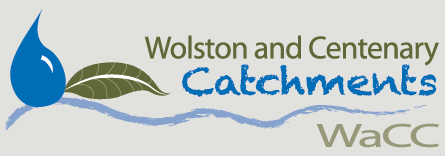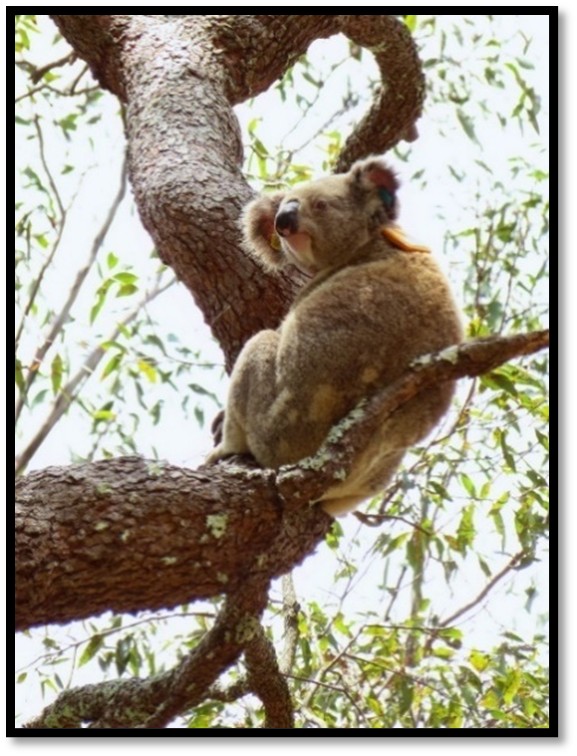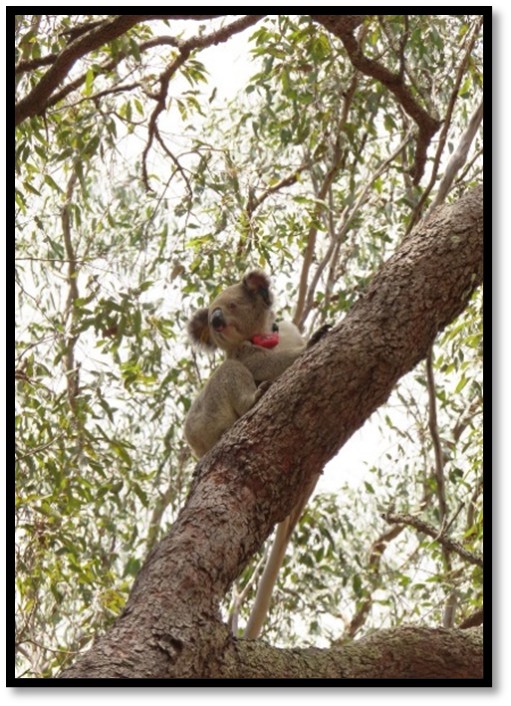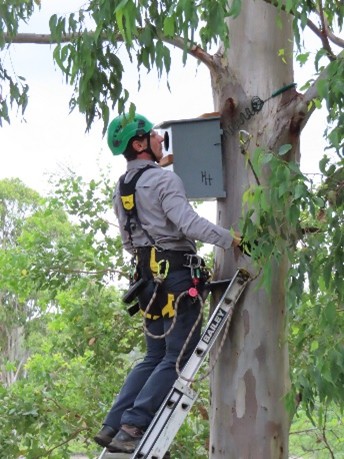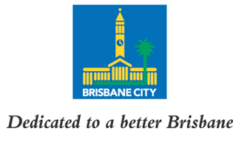Koalas
The Koala Research Program is a collaborative initiative between the Brisbane City Council, and various research institutes including the University of Queensland. The Project aim is to re-establish the healthy population of koalas in the Pooh Corner Bushland Reserve. It is run by Dr Sean FitzGibbon, Dr Bill Ellis and the team from the Koala Ecology Group and has resulted in the successful release of carefully selected koalas.
The first koala was released on 26th September 2022 and a total of 16 koalas now reside across Pooh Corner Bushland Reserve and nearby Wacol Bushland Reserve. There are now eight females, three males and three joeys living.
Our resolute WaCC members, Ed and Michael are giving their time to be involved in the citizen science support for the Project and have been trained to track the koalas and upload data to provide ongoing research. They are also collating observation data for GPS satmap images of the koalas’ movements and noting their preferred host trees. Koala images are available along with other information about other species this Bushland on BCC Two more koalas to call Brisbane home and inaturalist https://inaturalist.ala.org.au/projects/pooh-corner-bushland-reserve
The present population has settled in well and the evidence is there to see in the three new joeys, thriving. There is further carrying capacity in the Reserve to allow the release of more koalas and if anyone wishes to participate in the citizen science reporting or be notified when we have a koala walk, they can contact our secretary at info@wacc.org.au
Dr Sean FitzGibbon has pointed out that koalas, just like humans, have very specific food preferences. He has observed that the blue gum (E. tereticornis) is preferred by Matilda and the gum -topped box (E. moluccana) is preferred by Chandler.
Photos of Lady Jane taken in November 2023 by Ed Parker. She was released in 2022 and by mid-2023 had produced a joey which was named Glenda.
